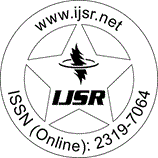Downloads: 136 | Views: 566
Research Paper | Electronics & Communication Engineering | India | Volume 5 Issue 11, November 2016 | Popularity: 6.7 / 10
An Segmentation Under Connected Components Based on Watershed Algorithm Using FPGA Processor
R. Kiruthikaa, S. Salaiselvapathy
Abstract: Watershed segmentation is a region based segmentation algorithm. It forms the peak joining two catchment basins containing regional minima. Watershed segmentation is more sensitive to noise and can leads to serious over-segmentation. In order to overcome the shortcomings of traditional watershed segmentation, this paper deals with marker controlled watershed algorithm based on connected components approach locating a regional minima. Mostly the watershed segmentation result in over-segmentation. The markers based watershed segmentation transformation reduces noise and over-segmentation. Watershed has been written in matlab code and also in VHDL hardware descriptive language. The main aim of this project is to implement in a FPGA which requires minimum hardware resources, low execution time and is suitable for use in real time applications.
Keywords: Watershed, segmentation, threshold, region growing, edge detection
Edition: Volume 5 Issue 11, November 2016
Pages: 422 - 426
Please Disable the Pop-Up Blocker of Web Browser
Verification Code will appear in 2 Seconds ... Wait
Click below to Watch Video Lecture of Above Article
